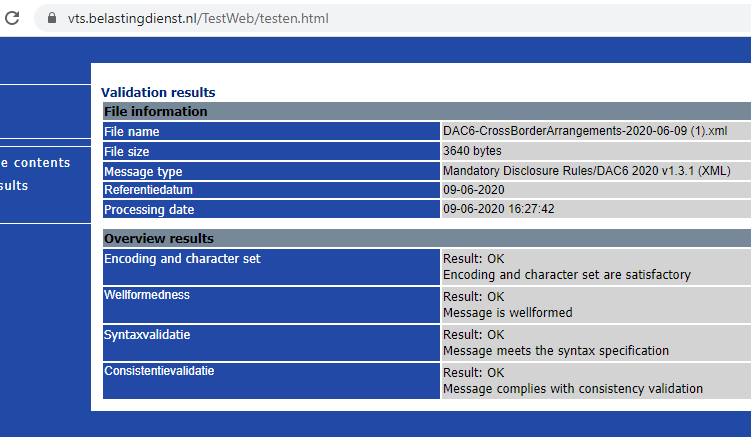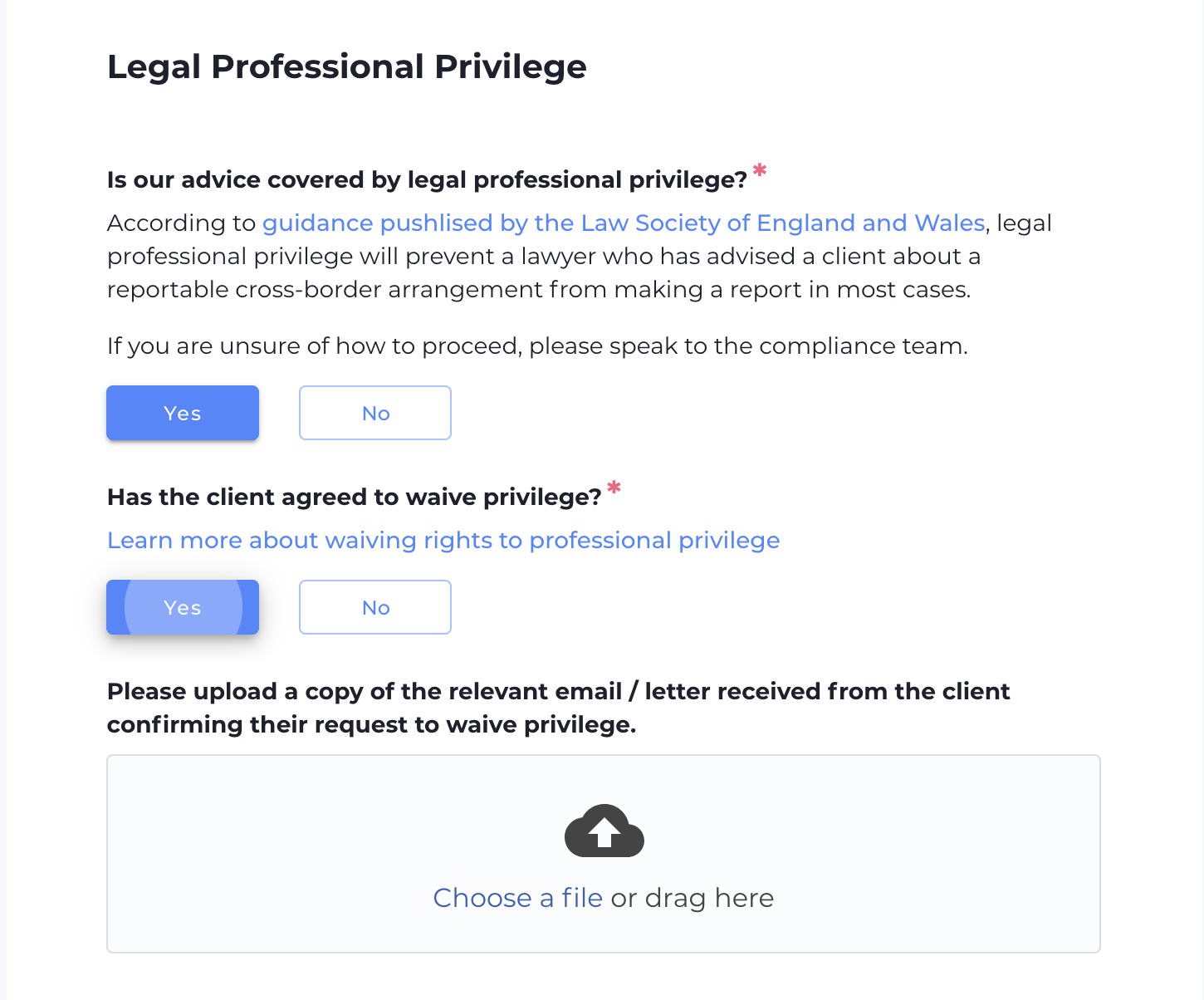Comprehensive intelligence that adapts to the nature and reporting country of the arrangement
Attempting to determine whether an arrangement should be reported under DAC6 is not simply a matter of reading the Directive or the Hallmarks. Each EU member state has transposed DAC6 into local law, many times with slight modifications.
VinciWorks’ DAC6 reporting tool features built-in workflow rules and expert knowledge for every member state. These workflows are available out-of-the-box and require no configuration.
The DAC6 reporting tool:
- Provides country-specific guidance for every member state in English
- Includes translated versions of some key government documents
- Adapts the workflow to each member state’s requirements
- Prompts the user to add local translations of the arrangement details where needed
- Detects when domestic transactions should be reported
- Is ready for automatic reporting in multiple jurisdictions with built-in XML schemas
This automatic intelligence and workflow was built in collaborate with international tax experts and is based on our comprehensive guide to DAC6 implementation across Europe.
To illustrate this, here are a number of examples from the DAC6 reporting tool.
Country-specific guidance
As you select the country that will be the reporting jurisdiction, the DAC6 reporting tool displays guidance relevant to the specific country. In the illustration below, you can see that as the country shifts from Poland to Portugal, the guidance adapts accordingly.
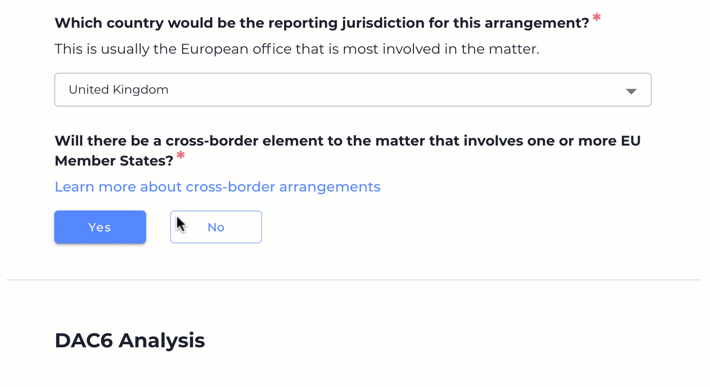
Translated versions of key documents
In the example below, Germany provides a whitelist of transactions that, despite meeting the main benefit test, are not reportable under DAC6. In the DAC6 reporting tool, the whitelist is provided in both German and English.
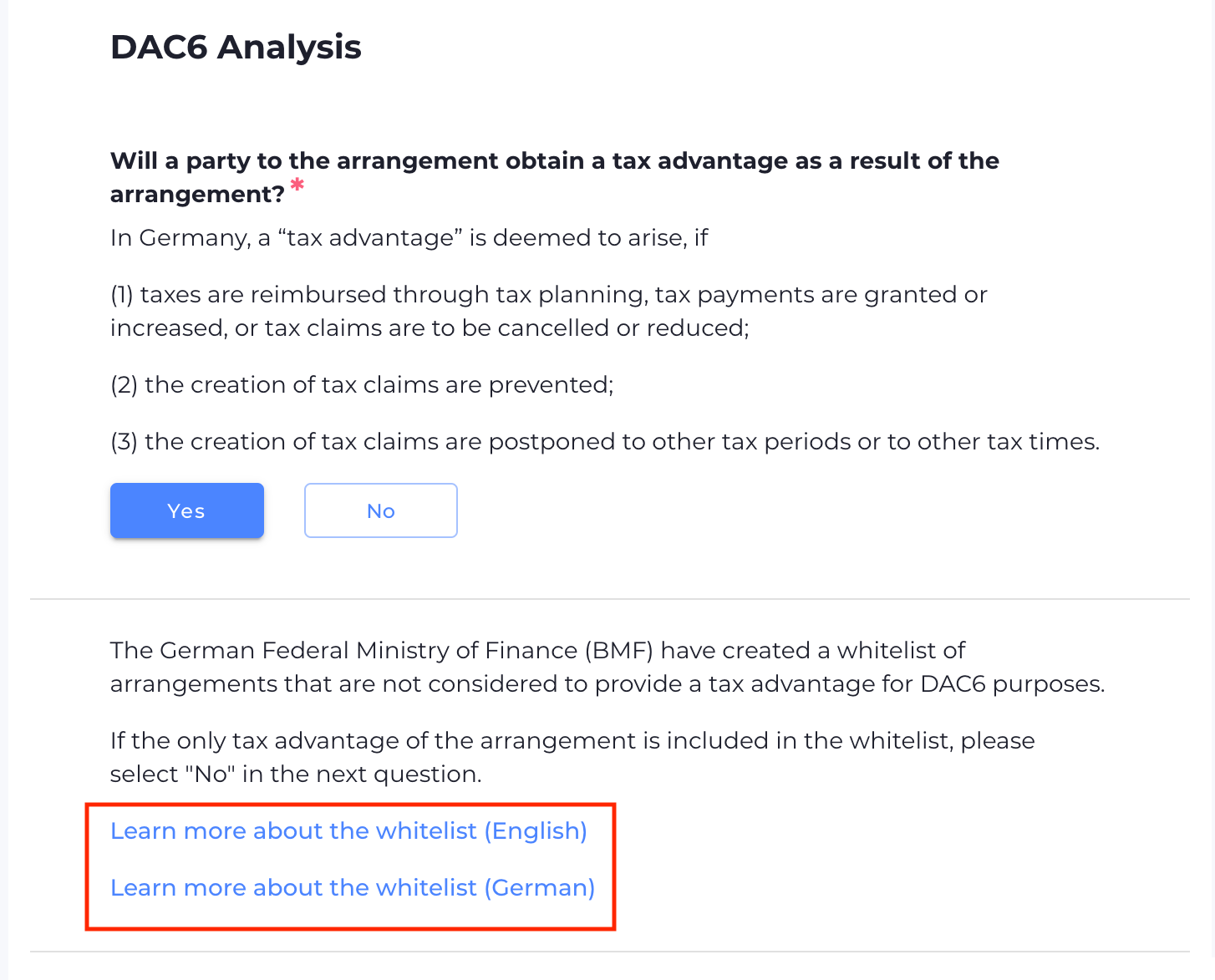
Detects when domestic transactions should be reported
Some member states (including Poland and Portugal) have expanded DAC6 to include some transactions that are purely domestic (i.e. are not cross-border).
In cases where the reporting tool detects that a transaction is domestic and is in a country that requires domestic reporting, it will notify the user.
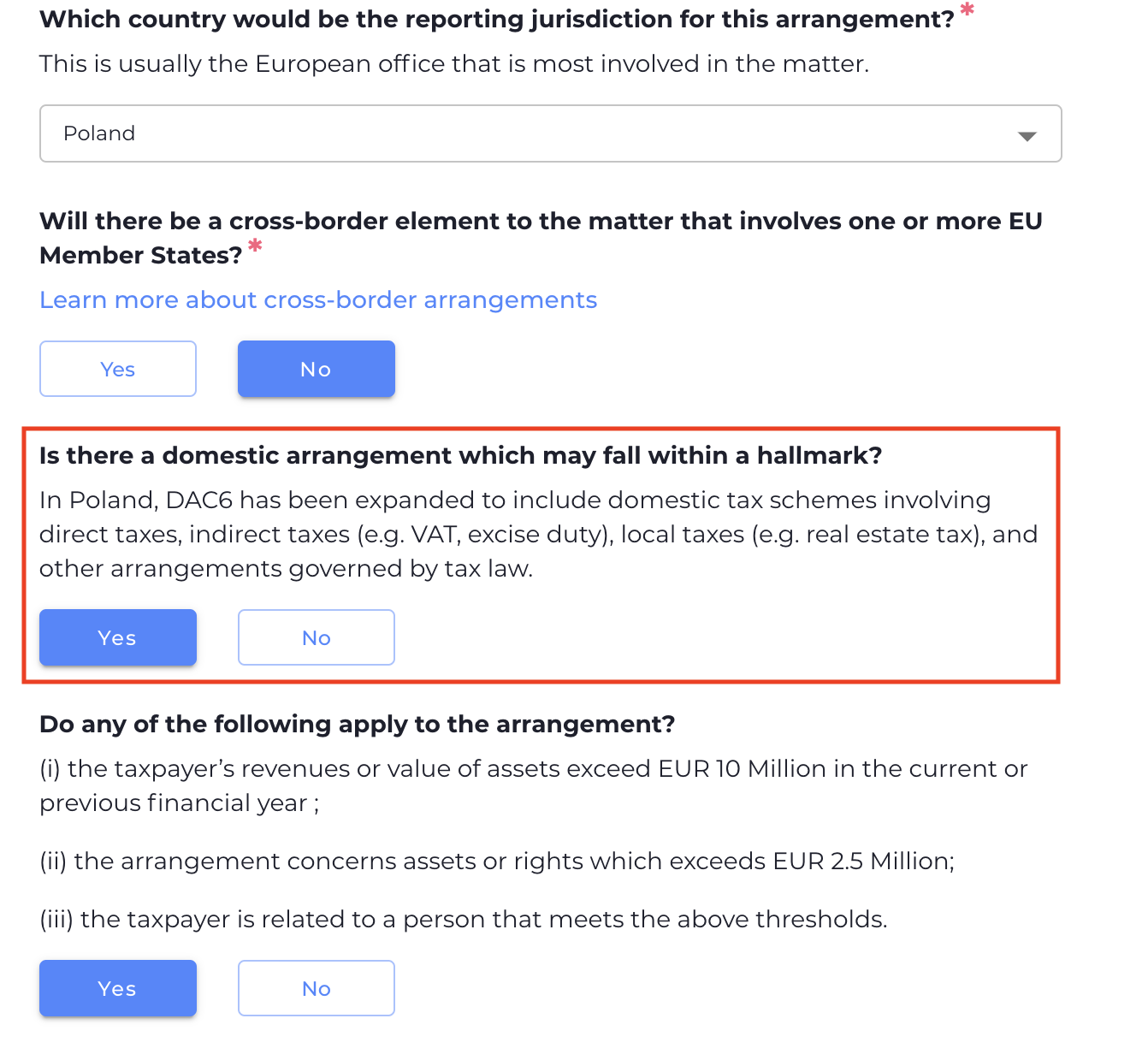
Adapting workflow
The workflow and decision tree constantly adapts and shifts depending on the information inputed. The definitions of each hallmark change depending on the country, additional hallmarks appear where applicable and more.
The form is built to only request the information that is needed. If it determines that the arrangement is not reportable, it does not ask for taxpayer details. If legal professional privilege is waived, it requests the relevant documentation.
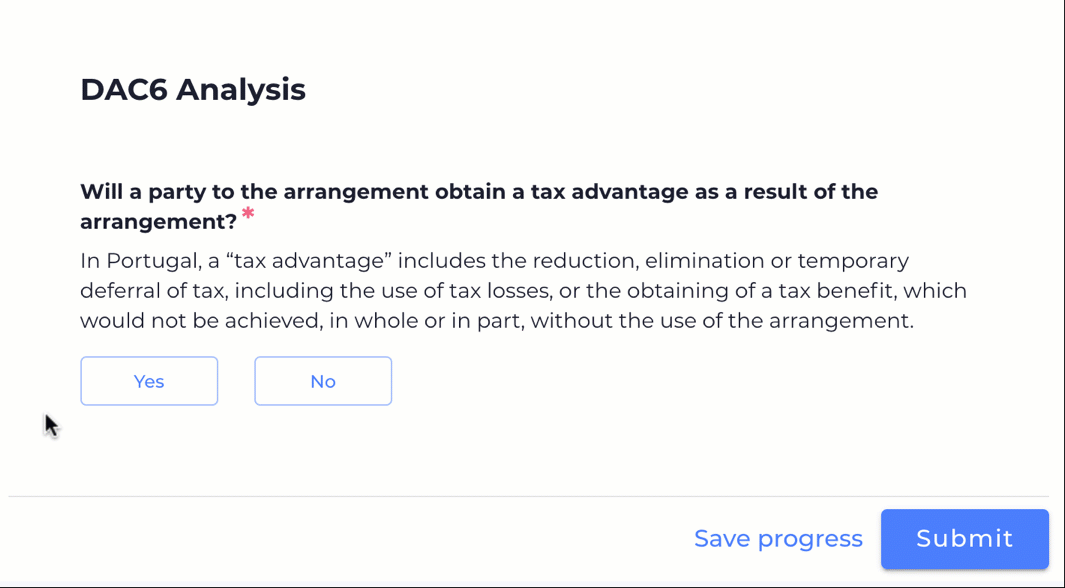
Ready for automatic reporting in multiple jurisdictions with built-in XML schemas
The DAC6 reporting tool features built-in XML schemas for a growing number of jurisdictions. As tax authorities publish APIs for automatic reporting, they will be implemented into the tool.
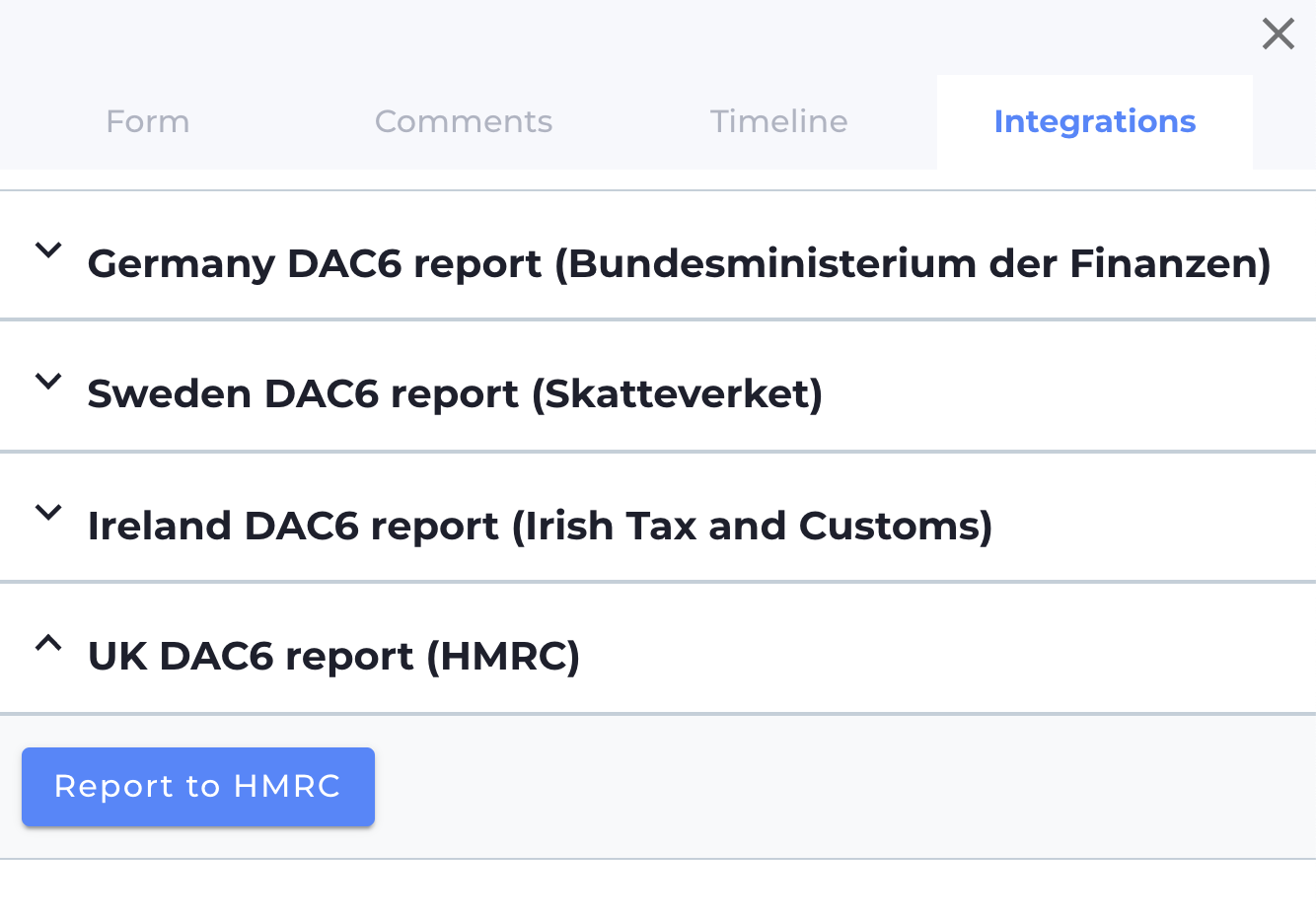
The Netherlands’ reporting schema, one of the first to be published, has been verified with the Netherlands’ tax authorities.
